This is a basic but very delicious kimchi recipe. If you've never made kimchi before, I think this will be a perfect recipe for you. I will guide you through the entire process and go into detail the specific ingredients you need.

I've been making kimchi every year for probably 4 years now. It's one of the activities I look forward to the most when the colder weather comes around and we are all stuck indoors. The process of making kimchi is very relaxing. You need to chop, rinse, and salt napa cabbage, then ferment it with a spicy kimchi paste. The entire process takes a few hours, and you have to prep quite a bit of different ingredients, but the result is so worth it. I totally understand why Korean aunties will gather at someone's house and just spend the entire day making kimchi. It's very fun and therapeutic.
Fun fact: my kimchi video was one of the most popular videos on my old TikTok account. I got over 15 million views in the first few months. And to this day, it still brings in a couple of likes every day. I've recreated the video below on my new account. Check it out:
Important steps/ingredients
Salt: Personally, I do not think the type of salt matters that much. Some recipes will say you need very specific Korean salt, but at the end of the day, the function of all salt is the same. They are salty. The purpose of the salt is just to inhibit the growth of bad bacteria and allow the lactic acid to prosper. Whether you use a fancy salt or just table salt, this recipe should work. I used coarse kosher salt.
Gochugaru: Gochugaru is a type of Korean dried chili flake. It has a red color and smoky flavor. They are actually not very spicy compared to other chili flakes which is why you can add quite a bit to kimchi without it being too spicy. You can find gochugaru at most Asian grocery stores, but you'll have the best luck at a specialty Korean store.
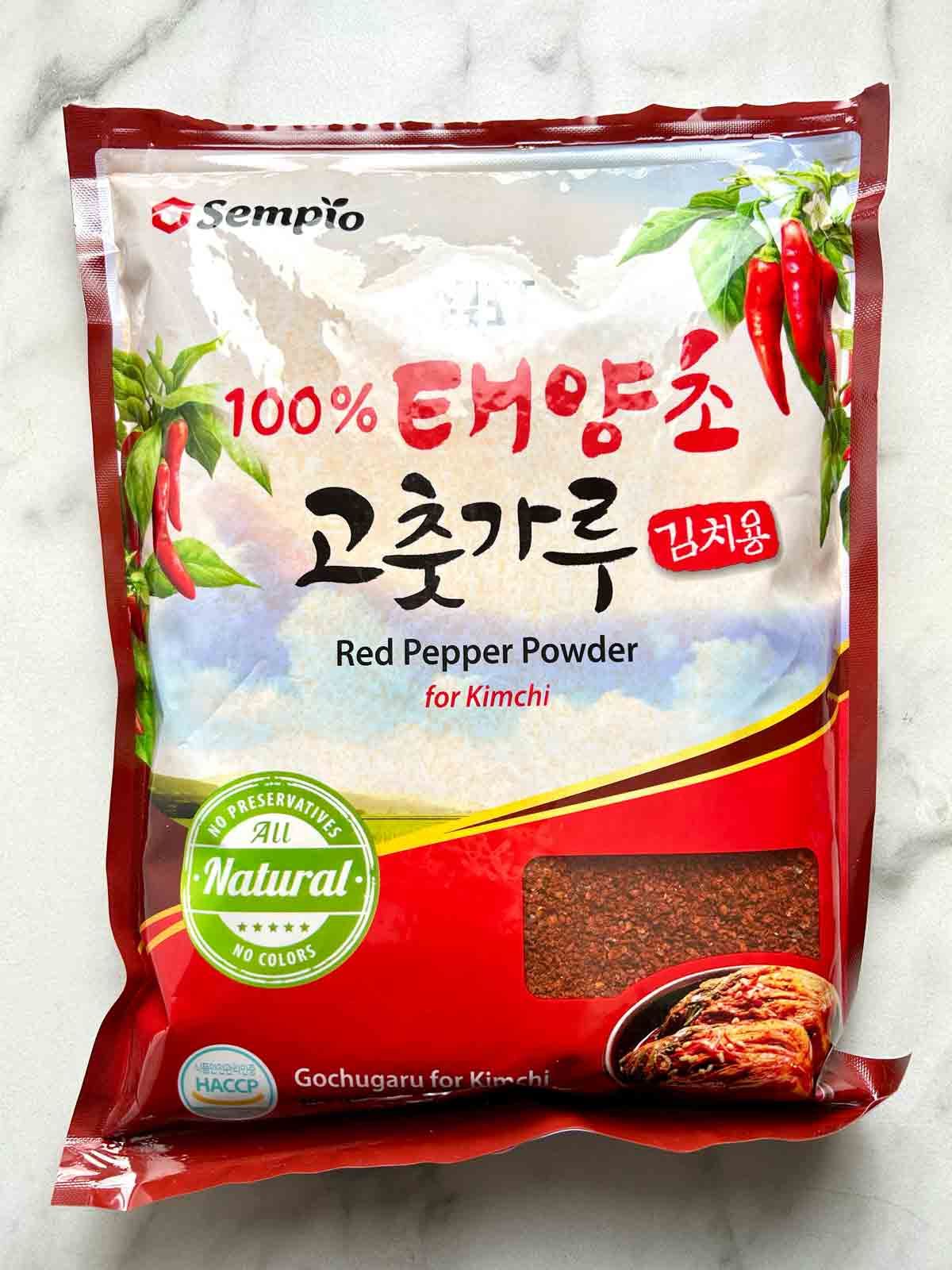
Korean salted shrimps (saeu-jeot): This is a salty fermented shrimp that many Korean dishes use for salt and umami. I bought mine from a Korean grocery store. If you plan on making kimchi often, I recommend you get a bigger jar because the small jars are quite expensive. I store my jar in my freezer, and it lasts several years.

Salting the cabbage: Salting the cabbage is important for two reasons. First, it sucks out the water from the cabbage which would dilute the kimchi. And second, it inhibits the growth of bad bacteria during the fermentation stage. I like to salt the cabbage in a large roasting pan. I find it is easier to handle big batches of kimchi this way. You want to toss the cabbage with 1 cup of salt and toss it every 30 minutes for 2 hours.
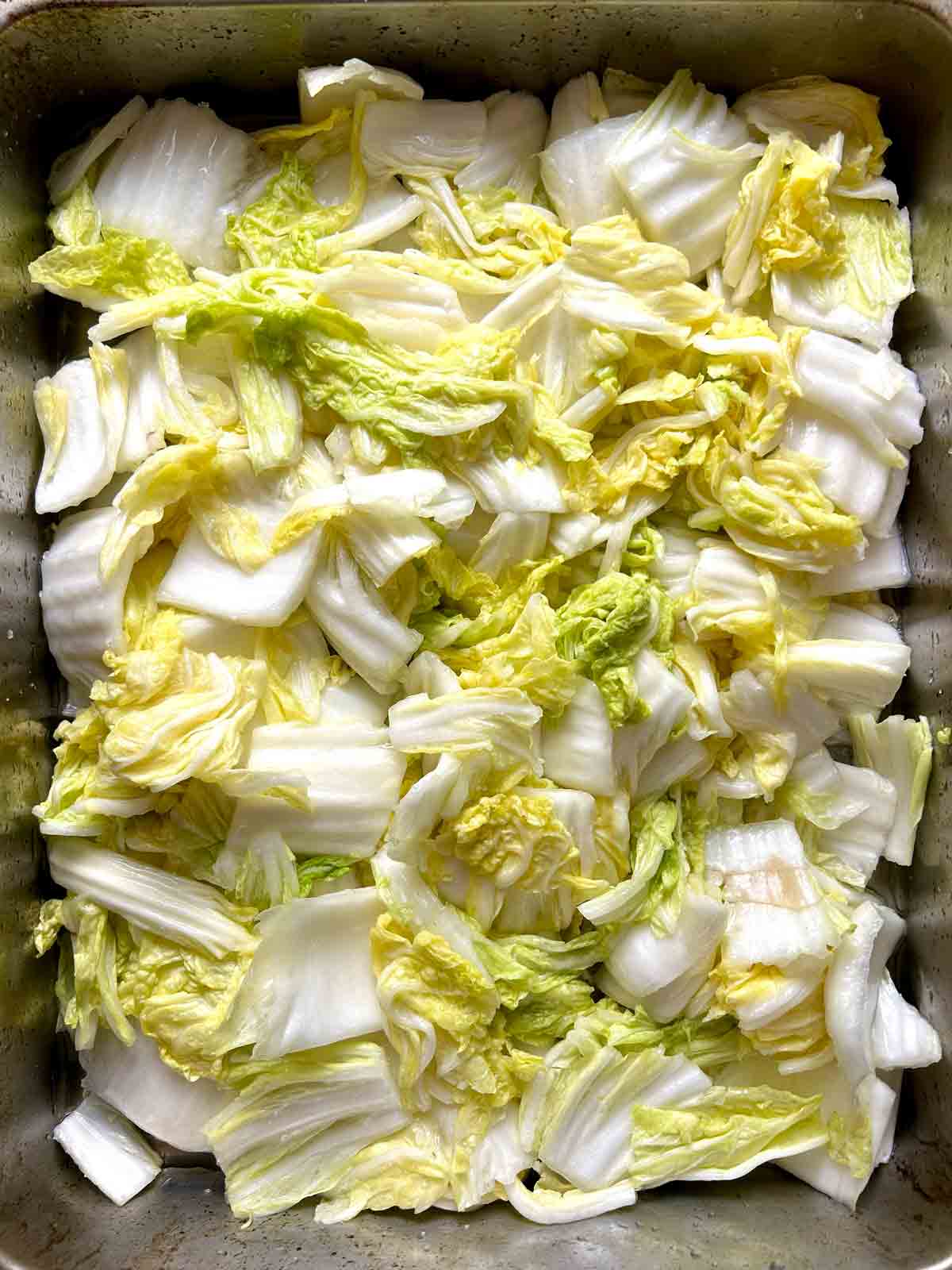
Making the rice glue: While the cabbage is salting, you can make the rice glue. All you do is combine glutinous rice flour, sugar, and water and heat it until it thickens. Make sure you let it cool down to body temperature before mixing it with the spice paste otherwise it could kill the lactic acid bacteria on the cabbage.
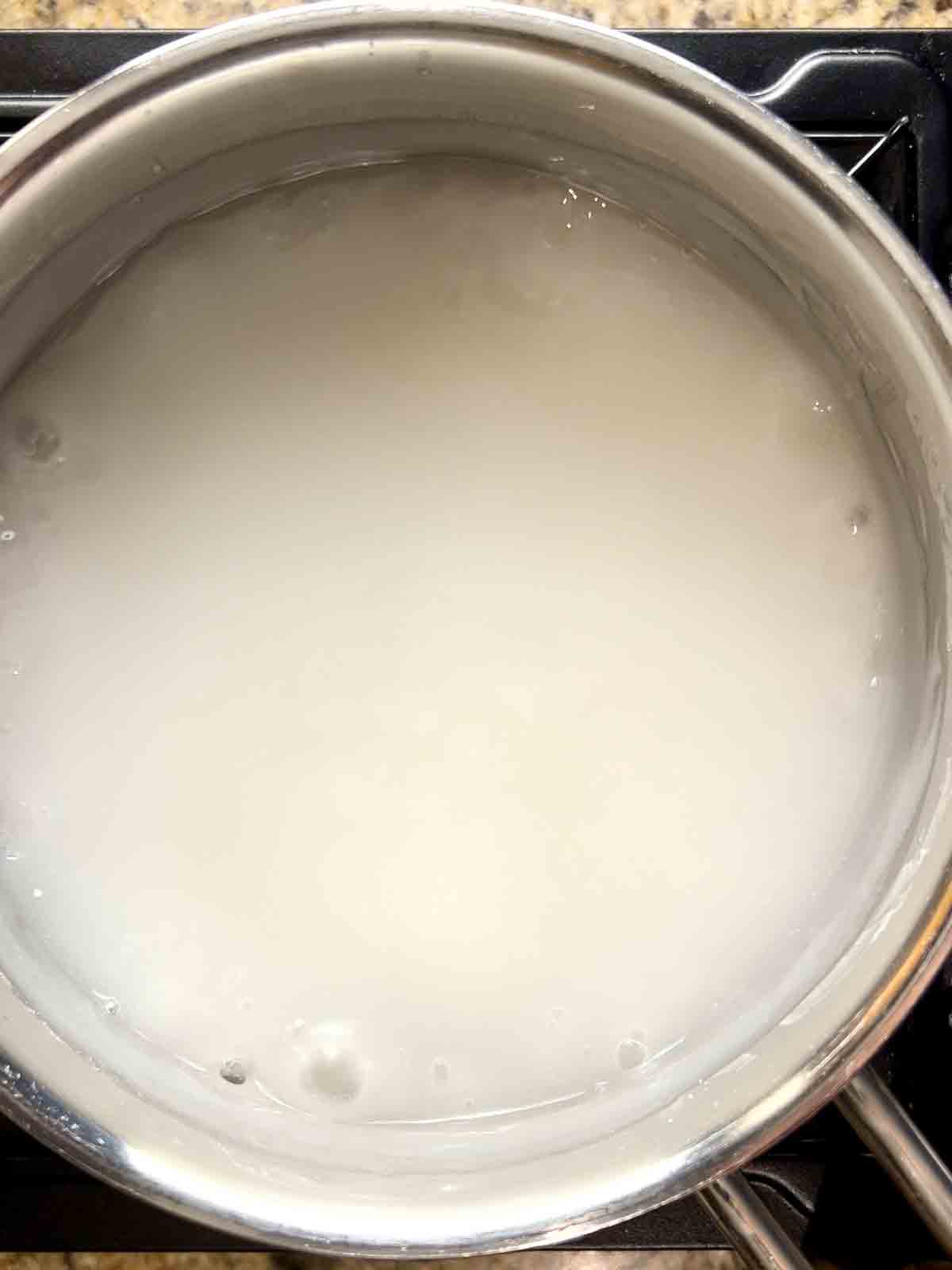
Making the spice paste: I've found the best way to make the spice paste is in a food processor. Not only does it get the ingredients into a very fine puree, but it is way easier than chopping yourself. Once the ingredients are processed, toss them with the rice glue, gochugaru, scallions, and daikon.
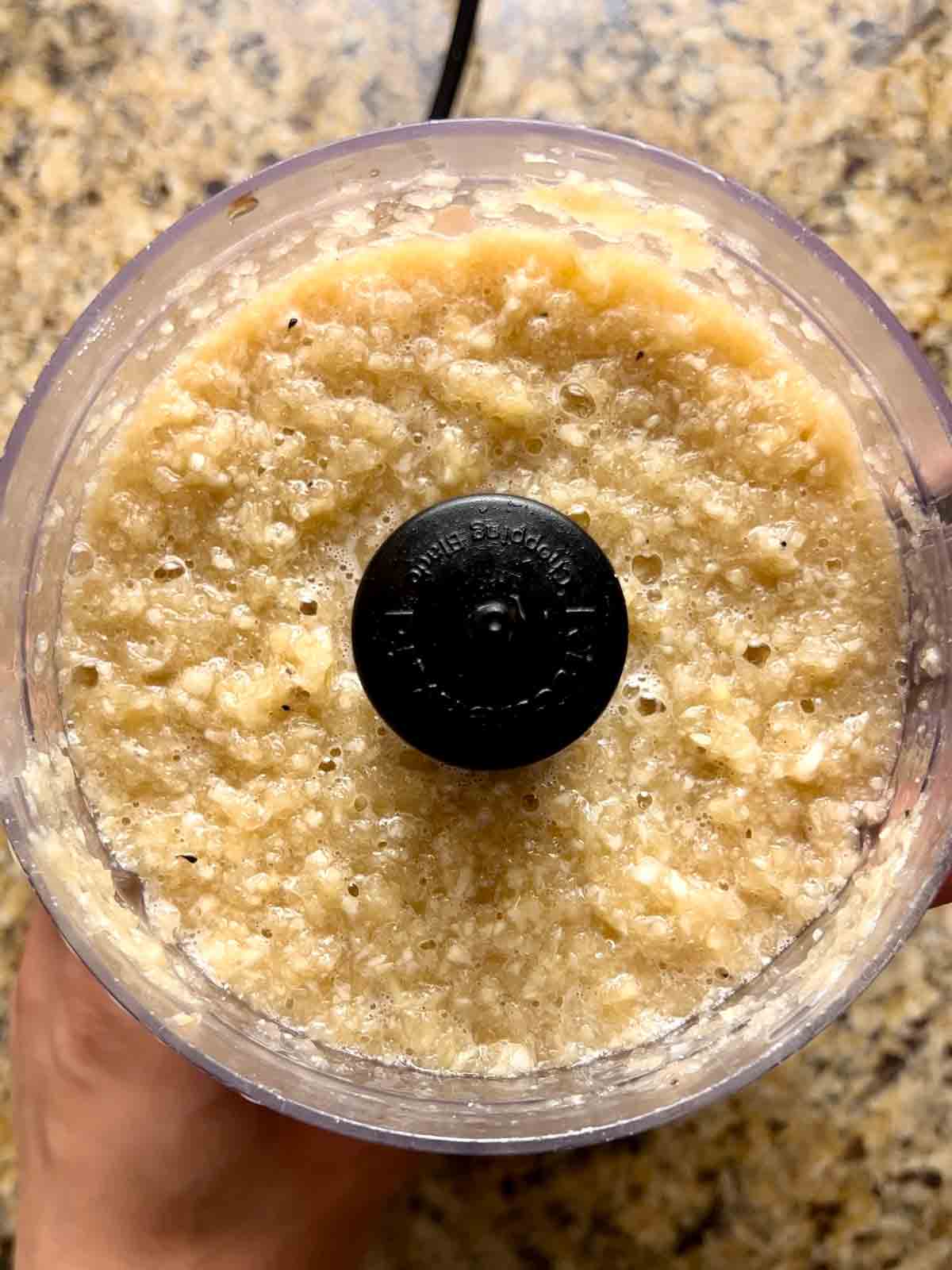
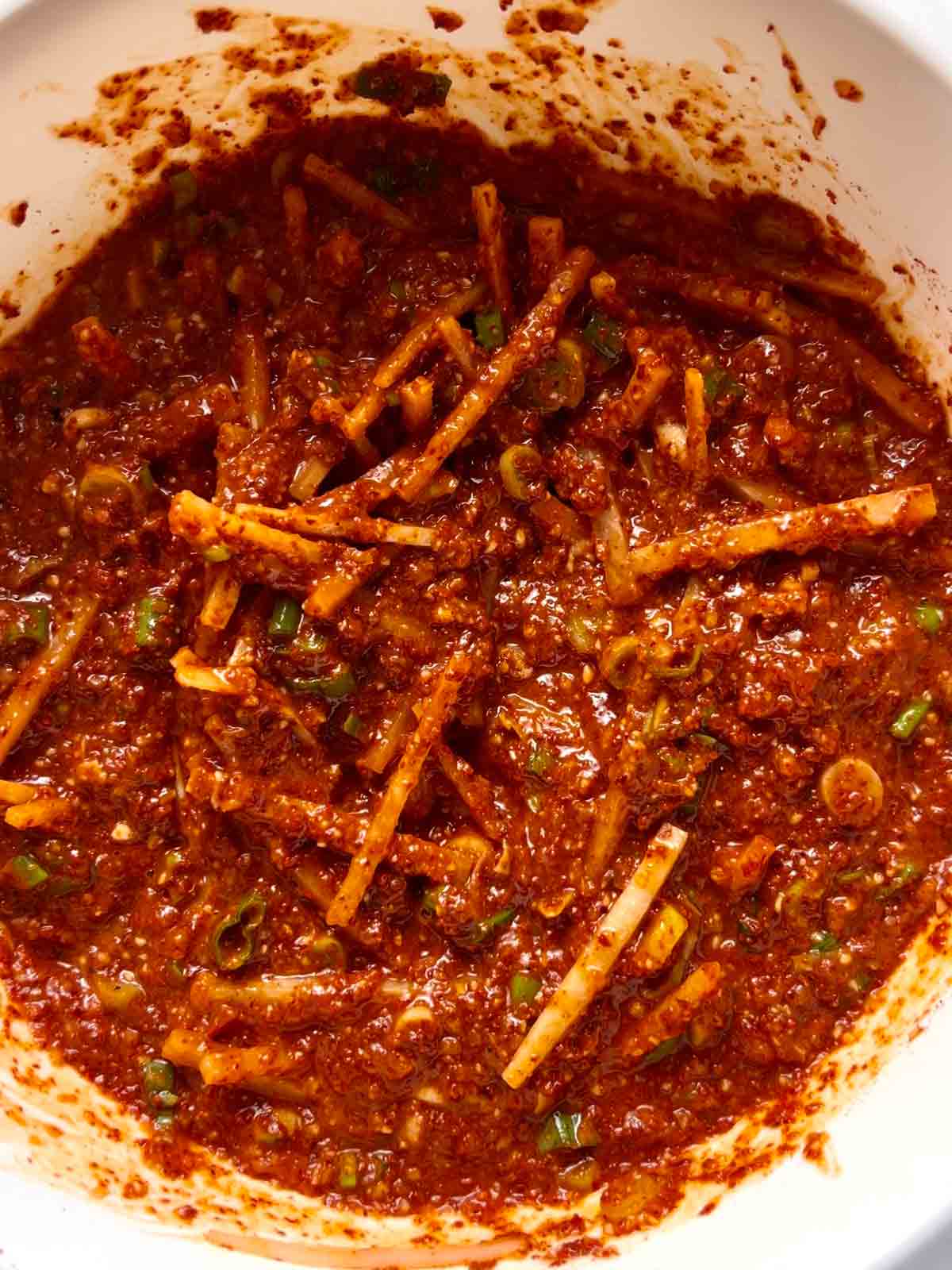
Mix and ferment: After mixing the cabbage with the spice paste, kimchi can take anywhere from 1-7 days to ferment. The actual time depends a lot on your ingredients and how warm/cold your house is. For me, it usually takes 2 to 3 days before it reaches a level of sourness that I like.
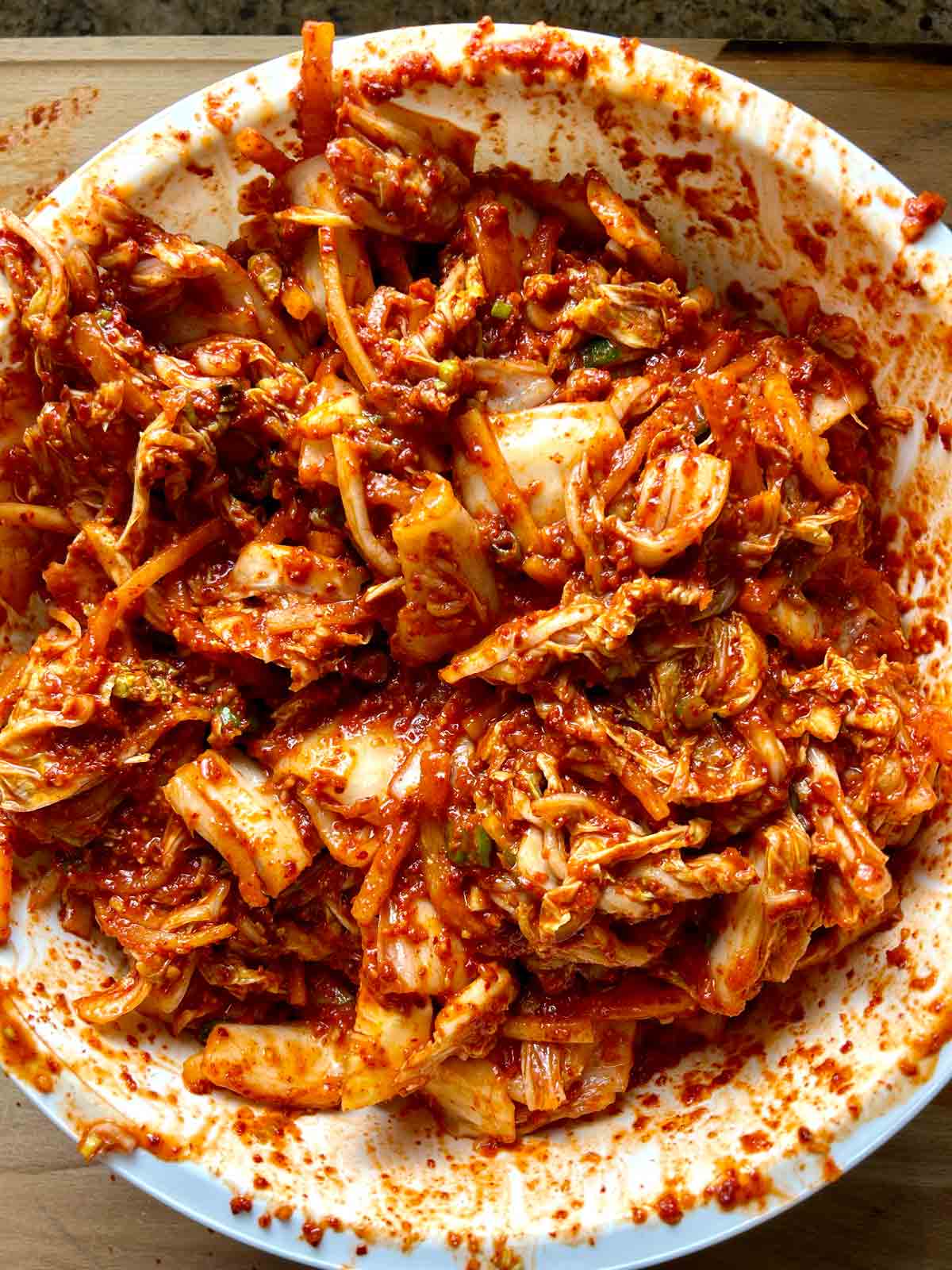

To ferment, you want to put the kimchi in a container that can be "burped" (releasing the built-up gas) every 12-24 hours. I usually put it in a glass cookie jar with the lid loosely on top or a food storage container with one side of the lid unlocked.
Sourness level: Some people like their kimchi very sour and others like it more mild. Feel free to test the kimchi every single day. Just get a pair of chopsticks and pull out a piece and taste it yourself. When the kimchi is up to your sourness, transfer it to the fridge for long-term storage.
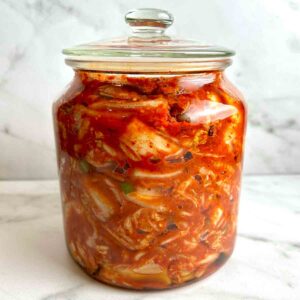
Kimchi
Ingredients
- 2 large heads napa cabbage (about 8 pounds)
- 1 cup salt
- ¼ cup glutinous rice flour
- ¼ cup sugar
- 1 ½ cups chopped apple
- 1 ½ cups chopped onion
- ½ cup garlic cloves
- 1 tablespoon chopped ginger
- ¼ cup Korean salted shrimp (you can buy this at a Korean grocery store)
- ½ cup fish sauce
- 2 cups gochugaru (Korean dried chili flakes)
- 8 scallions (chopped)
- 2 cups julienned daikon
Instructions
Salting the cabbage
- To split the cabbages in half, cut through the base of the cabbage then use your hands to "rip" the cabbage into two halves.
- Do the same with the halves to make quarters.
- Now cut each quarter into large bite-sized pieces.
- Rinse the cabbage under water and drain in a colander.
- For this next step, I like to do it in a large roasting pan. Add a layer of cabbage followed by an even sprinkling of salt. Repeat this until all the cabbage is salted. Let this rest for 2 hours, tossing the cabbage every 30 minutes so they salt evenly.
- Rinse the cabbage thoroughly under cold water to get rid of the salt on the outside, then drain in a colander or salad spinner (I had to rinse my cabbage in about 3 changes of water).
Making the kimchi paste
- In a small saucepan, combine the glutinous rice flour, sugar, and 2 cups of water. Whisk constantly over medium heat until it thickens, about 3 minutes. Remove from the heat and let the mixture cool to body temperature. Try to keep it below 110°F.
- In a food processor, blend the apple, onions, garlic, ginger, salted shrimp, and fish sauce into a puree.
- Now combine the rice mixture, garlic mixture, gochugaru, scallions, and daikon in a medium bowl. Mix until combined.
- Add the napa cabbage and toss until evenly coated.
- Transfer the kimchi to two large mason jars. Add the lids on loosely and let them ferment at room temperature for 1-7 days. Make sure to "burp" the jars every 12-24 hours to prevent pressure from building up. Taste a piece of kimchi every day, and when the sourness reaches your liking, transfer the kimchi to your fridge. You can store it for up to several months.



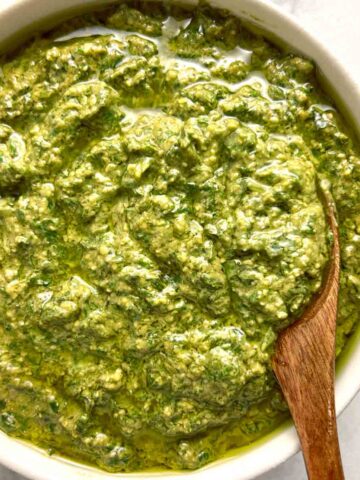

Leave a Reply